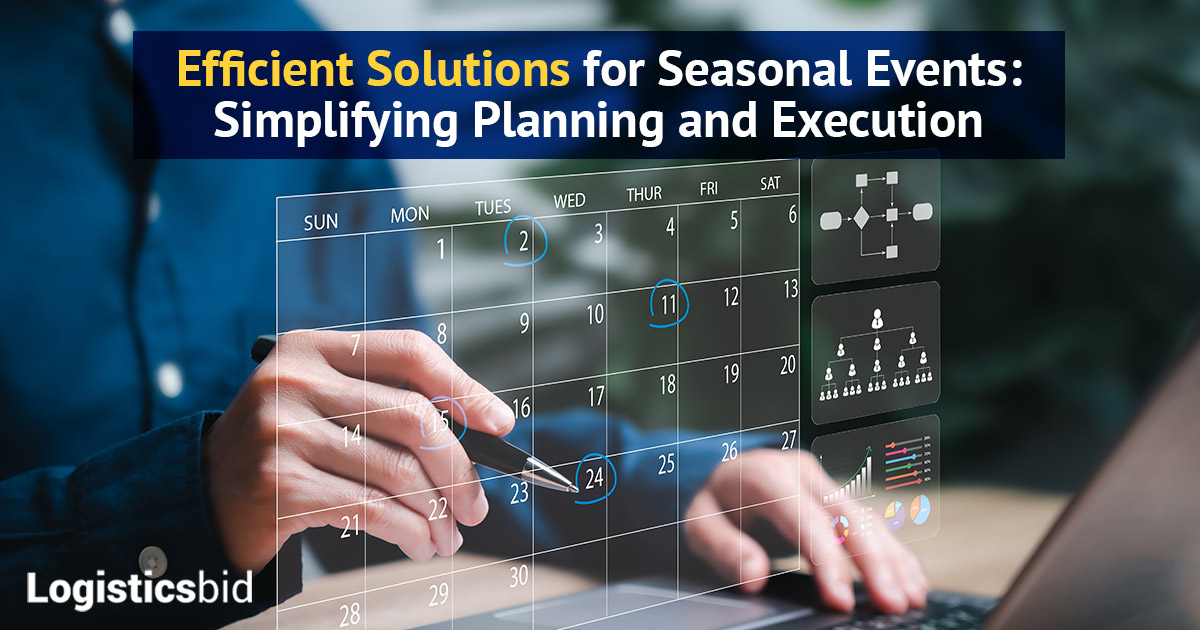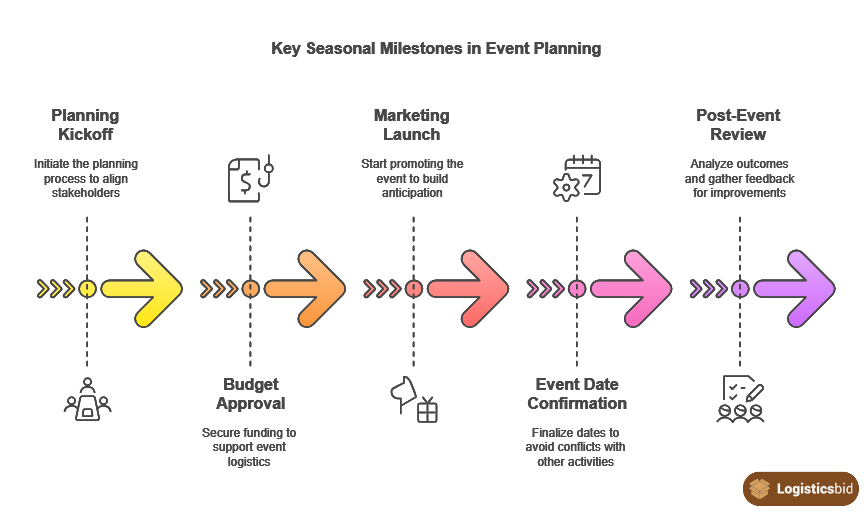
Effective strategic planning and execution is essential for successful seasonal events. It involves identifying critical milestones and establishing clear goals and objectives that guide the overall process.
Efficient Strategies for Organizing Seasonal Events in the Philippines
Identifying Key Seasonal Milestones

Identifying key seasonal milestones is crucial in the planning phase. These milestones serve as reference points to track progress and ensure timely execution.
Key Milestones Include:
- Planning Kickoff: Initiate the planning process to align stakeholders.
- Budget Approval: Secure funding to support event logistics.
- Marketing Launch: Start promoting the event to build anticipation.
- Event Date Confirmation: Finalize dates to avoid conflicts with other activities.
- Post-Event Review: Analyze outcomes and gather feedback for improvements.
Planners can make an intricate timetable to effectively manage work by charting these milestones.
Establishing Goals and Objectives
Setting clear goals and objectives is the first step towards a successful event. Clear goals provide direction and motivate teams throughout the planning stages.
Examples of Goals and Objectives:
- Boost Attendance: Try to get 20% more people to come than the year before.
- Boost Participant Interaction: Encourage participant interaction through activities or workshops.
- Maximize Sponsorship Revenue: Target a specific amount from sponsors to support the budget.
- Improve Customer Satisfaction: Set a satisfaction rate goal based on post-event surveys.
Defining these targets allows teams to measure performance and adjust strategies as needed.
Designing Solutions for Seasonal Challenges
Innovative approaches and strategic planning and execution are needed to address seasonal problems. Navigating these swings requires the use of technology, active engagement tactics, and efficient resource management.

Resource Allocation and Management
Effective resource allocation is critical during seasonal peaks. Identifying and prioritizing key resources ensures the right personnel and materials are available when needed.
- Assessment: Conduct a thorough analysis of demand trends. Understanding past seasons helps predict future needs.
- Budgeting: Allocate financial resources wisely, ensuring that funds are directed towards high-impact areas such as staffing and inventory.
- Staffing: Bring in temporary workers during peak times. Proper recruitment and training are essential for maintaining quality.
Adjustments based on conditions in real time are made possible by tracking resource usage throughout the season. This flexibility enhances operational resilience.
Innovative Approaches to Engagement
Engagement strategies must be creative to capture audience interest during seasonal events. Unique initiatives can significantly enhance participation and retention.
- Themed Events: Host events that resonate with seasonal themes. This can include holiday markets or summer festivals.
- Community Involvement: Engage local groups or organizations to foster a sense of community. Collaborative initiatives often attract broader participation.
- Feedback Mechanism: Implement strategies for gathering audience feedback. Adjustments can improve future engagements based on direct input.
Diversifying engagement methods can create memorable experiences, encouraging repeat participation and building loyalty.
Technology Integration for Efficiency
Incorporating technology streamlines operations and enhances customer experience during seasons of high demand. Digital solutions can create efficiencies that are crucial for managing workflow.
- Data Analytics: Utilize data to analyze customer behavior and optimize inventory management. Insights from analytics inform decision-making.
- Automation: Automate repetitive tasks. This allows staff to focus on critical customer interactions and strategic initiatives.
- Communication Tools: Implement communication platforms for real-time updates with staff and customers. This fosters transparency and improves service delivery.
Leveraging technology in key areas can transform operational processes, making them more effective and responsive to seasonal changes.
Execution and Implementation
Effective execution and implementation are vital for the success of organized solutions for seasonal events. A structured approach ensures seamless workflows and maintains high standards throughout the planning and execution phases.
Operational Workflow Optimization
To enhance operational efficiency, organizations should outline clear workflows. This involves defining roles, responsibilities, and timelines to create accountability.
An effective workflow might include:
- Task Assignment: Specify who is responsible for each task.
- Timeline Development: Establish deadlines to keep the team on track.
- Communication Protocols: Utilize tools for regular updates.
By maintaining transparency through these elements, teams can swiftly address issues that arise during execution. Furthermore, incorporating technology—such as project management software—can streamline operations. Automated task reminders and progress tracking enhance productivity, ensuring that everyone stays informed and aligned with objectives.
Quality Assurance and Control Measures
Implementing quality assurance protocols is essential to uphold standards. Regular audits and feedback loops help identify areas for improvement throughout the event process.
Key measures include:
- Checklist Creation: Develop checklists specific to each event type, ensuring no detail is overlooked.
- Review Meetings: Schedule regular touchpoints to assess progress and resolve potential challenges.
- Post-Event Analysis: After the event, gather feedback from attendees and team members to evaluate the execution quality.
These practices build a foundation for continuous improvement, ensuring that each seasonal event not only meets but exceeds expectations. Prioritizing quality at every stage solidifies a reputation for excellence.
Monitoring, Evaluation, and Adaptation
Effective monitoring and evaluation are essential components of successful event planning and execution. They enable organizers to assess the impact, identify strengths and weaknesses, and make informed adaptations for future events.
Performance Metrics and Analysis
Establishing performance metrics is crucial for measuring the success of seasonal events. Key metrics may include:
- Attendee numbers: Track registration and attendance levels.
- Engagement rates: Measure participant interactions during the event.
- Satisfaction surveys: Gather feedback on the event experience.
Regular analysis of these metrics allows organizers to pinpoint areas needing improvement. For instance, comparing attendee satisfaction scores across different events can highlight which elements resonate best. This procedure can be streamlined by using tools like dashboards, which offer a clear visual depiction of performance patterns.
Feedback Mechanisms and Improvement Processes
Implementing feedback mechanisms offers valuable insights into participant experiences. Methods include:
- Post-event surveys.
- Direct interviews with attendees.
- Social media engagement.
These mechanisms foster an open channel for suggestions and critiques. It is important to act on the feedback received to demonstrate responsiveness and commitment to improvement. For example, addressing common concerns identified in surveys can boost future attendee satisfaction. Creating a structured framework for incorporating feedback ensures continuous enhancement of events. Regular review meetings can help the team evaluate responses and adjust strategies accordingly.
